#mah meri
Text

Mah Meri girl, Malaysia, by Barcroft Media
#mah meri#malaysia#asia#southeast asia#folk clothing#traditional clothing#traditional fashion#cultural clothing
615 notes
·
View notes
Note
Please draw Meri and Clef hugging, it's for mah soul-
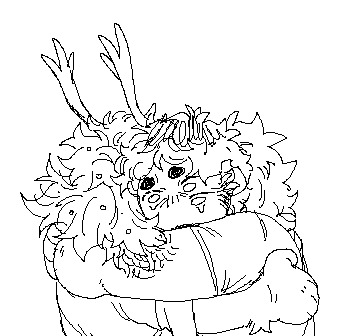

I don't know how you thought it would go
159 notes
·
View notes
Text

"Kuch toh Hawa bhi sard thi , kuch tha tera khayaal bhi
dil ko khushi ke saath saath hota raha malal bhi"

"sab se nazar bacha ke woh mujh ko kuch aise dekhta
ek dafa toh ruk gayi gardish mah o saal bhi"

"Meri talab tha ek shaks woh jo nahi mila toh phir
haath dua se yun gira bhul gaya sawal bhi"
Parveen Shakir
پروین شاکر
#love#urdu poetry#dark academia#spilled thoughts#aesthetic#poets on tumblr#urdu lines#parveen shakir#urdu stuff#urdu academia#artist on instagram#artists on tumblr#writers and poets
12 notes
·
View notes
Text
my very own au, but i remastered the whole au, new designs, and very rewritten lore for my broken welcome home au! Wally is mentally and physically broken, whiting insanity inside him! Story: Wally darling was once a sweet neighbor, a leader to the createful puppetry land, as humans and puppets made an war once, and now live seperated, due to that, he made one friend whitin a the human place, A woman who had a husband, she seemed sweet but her odd appearance was..wierd..her name was never revealed, but her last name was Reality, quite Odd? Anyways, they were best friends, something wally hadnt had one for a while and almoste drove him insane.Untik years went by, she was just gone.This made him break physically, slowly becoming Broken.Slowly anyone in the puppet place goes against him, they shall suffer and be throw to the trash of void, or when he feels merciful enough, hell just reset them to the very start of creation, and add overdosed insane happyness and make them LISTEN TO HIM. Some survivors stay silent but when they have their chance they warn others for safety when wally isnt looking.The Home and Julia are the only loyal friends to wally, they will tell him everything that isnt perfect or seems suspicious.Only Eddie and Frank are the most strong survivors which stay okay to wally's eye, but when they have their chance, they often just try helping visitors who come here, but often..theyre to late.Wally knows about his other universes him..specially the original, often he likes looking because their ideas of their home's intrests him. Later as each souled human childrens fell, they often are treated whit kindness, but then later it just..gets darker..each forced of bad deeds..then a painful suffering..then finally..a relief of death but..u wont leave..YOULL STAY HERE. Now his main target is the last fallen human..a human whit an odd soul he has never seen..Black soul..a human who lives whitin a disease? how fun..Well..he would love to meet the human child named..
Merijem Reality = )
FunFact: before meri fell down to that place, her father was first, and wally was caught in intrest. [lol, ship? idk- lol the wife gonna be like: DUDE U ARE MY BESTIE WHY U STEALIN MAH MAN?] which was the husband of the missing lady (whicg theciaclly was a spirit now, bc after she gaved birth to Merijem) and honestly, he put him around a never ending forest, and often visits there to tease and torment him for fun, as the Father is so tired honestly, bc all he wants is to find his Child.
like Merijem trying to Find her Dad.
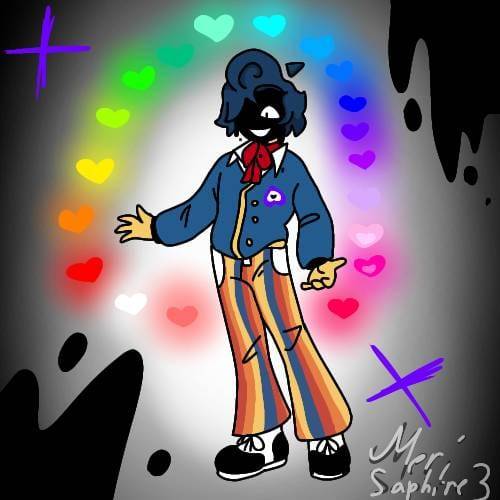
#art#au#my art#lore#artwork#fandom#my au#oc#storyline#original#original au#wally darling#welcome home wally#welcome home#welcome home au#wally au#wally art#broken au#broken#broken wally au#absolute insanity#insanity#human#humans#soul#souls
5 notes
·
View notes
Text

Bat Week 2020: A Celebration of Bats in Asia-Pacific Cultures
Art by Reimena Yee.
(Bigger image from here for more readable text. The background colouring is a little too bright though)
Text on the map under the cut.
You may have heard the soft flutter of bat wings at dusk, noticed them flitting around at night, or even seen them sleeping under roof eaves, in trees and caves during the day. But apart from these brief encounters, have you ever wondered how bats may have traditionally held deeper symbolic meaning in various cultures?
This visual map guide celebrates the many positive bat symbols and folklore found across the Asia-Pacific region. Our ancestors recognised the importance and wonder of bats!
Look out for our full write-up and get updates by following rimba.ngo!
Project Pteropus, a project under RIMBA.
India
In India, Hindu devotees of the goddess Kali worship and protect flying foxes which roost in sacred groves. Bats also feature as symbols of love in Tamil Sangam poetry, dating back more than 2000 years!
China / Taiwan / Chinese culture
A tale from ancient China: The gods took pity on Zhong Kui when he committed suicide. They named him King of Ghosts and tasked him to discipline demons, with bats acting as his helpers who scout out demons for him to vanquish.
In Chinese opera, the Zhong Kui character wears a bat motif on his mask.
The Five Blessings (五福 wŭfú) in Chinese culture are health, wealth, longevity, love of virtue and peaceful death. They are represented symbolically by five bats (五蝠 wŭfú).
In traditional Chinese culture, bats are lucky symbols because the word for bat (蝠 fú) sounds like the word for blessing (福 fú).
Lucky bat motifs can be found on traditional ceramics, jewellery and textiles in Chinese, Peranakan and other Chinese-influenced communities across East and Southeast Asia.
Vietnam
Locals believe that flying foxes roosting in the Wat Mahatup temple grounds in Vietnam are calling forth blessings from Buddha when they circle the temple during their fly-out every evening.
Malaysia / Indonesia
The indigenous Mah Meri in Peninsular Malaysia perform a traditional dance called 'kuang kuwait', mimicking the graceful movements of flying foxes.
The 'siku keluang' a choreography step in the traditional Malay Zapin dance represents humility and restraint - inspired by the flying fox wrapping up its mighty wings' strength when not in flight.
The 'siku keluang', meaning flying fox elbow in the Malay language, is a zigzag, chevron or herringbone motif used in Malay and Javanese traditional textiles and pottery.
According to a traditional Iban belief from Sarawak, Malaysian Borneo, bats act as shamanic messengers to the upper-world during the Gawai harvest festival.
The indigenous Iban in Sarawak traditionally featured the flying fox, locally known as 'semawa', as a tattoo motif.
Papua New Guinea / Western New Guinea
In Bowi folklore of Papua New Guinea, Kinjinmbunduo was a mythical giant flying fox female spirit who left thunderstorms and strong winds in her wake, striking terror and awe but also replenishing the river basin with fruit trees by dispersing seeds during her nocturnal visits.
In New Guinea and Papua New Guinea, the indigenous Asmat and Trobriand carved out flying fox motifs on their war shields to represent triumphant head-hunters.
Samoa
Flying foxes are perceived as protectors and saviours in Samoan folklore. According to legend, Samoan Princess Leutogi befriended and warned flying foxes about the king's hunting plans. In return, the bats rescued her from being burned alive and also brought her food when she was stranded on an inhospitable island. She later bestowed the name "Tonumaipe'a" on her son, meaning "rescued by flying foxes".
For Samoan men, the pe'a—the local name for flying fox is a coming-of-age tattoo that extends From the waist to the knee, symbolising protection over a warrior.
The Samoan war god Sepo took the form of a flying fox to guide his people in battle. If they saw a flying fox ahead, it meant victory would be theirs; if it flew back towards them it was a warning to retreat.
Australia
Flying foxes were important animals to the Aboriginal people of Cape York, Australia, and a common feature in their prehistoric rock art.
Folklore of the Aboriginal Wik in Australia tells of two brothers who broke taboo by spearing and cooking flying foxes. The bats escaped and carried the boys up into the sky as punishment, leaving them there to serve as a grim reminder now immortalised in the Gemini constellation!
Link to open access article of the research:
#bat#bats#asia pacific#south east asia#asia#folklore#culture#cultures of the world#asian culture#chinese culture#tradition#indigenous#indigenous culture#bat week#chiroptera#mammal#animal#bats of asia#india#china#taiwan#vietnam#malaysia#indonesia#papua new guinea#new guinea#samoa#australia#partially described#bat info
2 notes
·
View notes
Text
Makade main sakhi Kyun dear se jaam aaye
Mah easi tu de dea ki meri talab ka na rivayat main naam aaye
Or dariya e ashak ka daroga kya banaya tumhe
Kase munasib na ho salab Aye
0 notes
Text
welcome!
this blog loves planet earth and the people in it.
some notes:
I generally try to identify places + groups
I try to make conscious decisions about tags that respect cultural identities, consider historical context and reject imperialism. I realize this is impossible and messy and doomed to be inconsistent. choices I've made include one Korea, one Ireland, and multiple tags for separatist states, i.e. Scotland, Catalan Countries.
I am currently unsure when or if it makes sense to tag the "bigger" nation in a post about an autonomous region, ex. China and Tibet, Faroe Islands and Denmark. I want to respect widespread independence movements, but also not become bloated with regional tags. Tibet deserves to be free of China but I have to laugh at modern Texas separatism.
Israel does not get a tag. Jewish diaspora, Free Palestine, genocide, USA, and anti imperialism are used.
I am not always sure when to use the indigenous peoples tag. if I am unsure I will probably leave it out.
except the history and prehistory tag, I currently am not tagging things that no longer exist, ex. Soviet Union, Ancient Greece
Some tags like EU, UK, Africa, Asia, Latin American, Polynesian, etc. are used in posts that refer to many places/groups collectively ex. Lunar New Year in Asia
I try to tag the country/group that an artist/writer/creator belongs to, ex. a post featuring Baldwin tagged with USA, literature, black diaspora
tags are ever-evolving
country/place tags:
Africa, Albania, Argentina, Armenia, Asia, Australia, Austria, Azerbaijan, Belarus, Belgium, Bhutan, Bosnia and Herzegovina, Botswana, Brazil, Bulgaria, Cameroon, Canada, Catalan Countries, Central African Republic, Chad, Chile, China, Colombia, Congo, Cuba, Czechia, Denmark, Dominican Republic, Emirates, Estonia, Ethiopia, EU, Faroe Islands, Finland, France, Germany, Greece, Greenland, Guatemala, Haiti, Hawai'i, Hungary, Iceland, India, Iran, Ireland, Italy, Japan, Kazakhstan, Kenya, Korea, Kosovo, Kyrgyzstan, Latvia, Lithuania, Malaysia, Maldives, Mexico, Moldova, Mongolia, Montenegro, Mozambique, Namibia, New Zealand, Niger, Nigeria, North Macedonia, Norway, Pakistan, free Palestine, Panama, Paraguay, Peru, Philippines, Portugal, Puerto Rico, Qatar, Romania, Russia, Scotland, Serbia, Slovakia, Slovenia, Somalia, South Africa, South Sudan, Spain, Sri Lanka, Sudan, Sweden, Switzerland, Syria, Taiwan, Tajikistan, Tanzania, Thailand, free Tibet, Turkey, Uganda, Ukraine, USA, Uzbekistan, Vietnam, West Papau, Yemen, Zambia, Zimbabwe
diaspora + ethnic group + cultural group tags:
Ainu, Apache, Bahá'í, Basque, Black diaspora, Chechen, Choctaw, Chulym, Dakota, Dolgan, Galician, Gavião, Guarani-Kaiowá, Hui, Igbo, immigrants, Inuit, Ixil, Jewish diaspora, Karakalpak, Kashmir, Kazakh, Ket, Khakas, Lakota, Latin American, Lezgin, Mah Meri, Maka, Makonda, Mohegan, Ojibwe, Pataxo, Polynesian, Q'eqchi', Rapa Nui, Rohingya, Romani, Rukai, Ryukyuan, Sakapultek, Samburu, Sámi, Selkup, Sioux, Tamil, Tatar, Tigray, Tlingit, Tokalau, Uyghur, Yazidi
culture + other tags:
agriculture, airports, animals and wildlife, architecture, art, children, clothing and textiles, dance, ecology and environmentalism, festivals and holidays, film and tv, food, geopolitics, history, infrastructure, language, literature, maps, music, myth and legend, my posts, nature, prehistory, postcards and stamps, public transportation, religions and belief systems, solidarity, sports and games, traditions and customs, true spirit of the blog, urban landscape, water and boats
ugly tags:
acab, anti capitalism, anti imperialism, anti misogyny, anti xenophobia, genocide
0 notes
Text
Tourism Selangor Showcases Hidden Gems in Media Explorace 2023
Tourism Selangor took center stage in the Tourism Malaysia Media Explorace 2023, drawing over 80 local and international media members to explore the hidden treasures of Selangor from November 8th to 10th. The expedition uncovered the ecotourism, heritage, and cultural richness in Sepang, Kuala Langat, and Petaling districts, featuring landmarks like Bandar Palace, Mah Meri Cultural Village,…

View On WordPress
0 notes
Photo

Re: Ketam
It’s not guaranteed that this was what inspired the enemy but Roland Werner’s Mah-Meri book actually contains two Ketam spirits including depictions.
Here is also an image of the Moyang Ketam Impai mask: https://projectprose.wordpress.com/tag/moyang/
____________________________________________________
My goodness, it was in the Werner Mah-Meri book! This and the link are spectacular, thank you! Here is the Moyang Ketam Impai mask:

Never would have expected this. Ketam anon, here’s your answer!
6 notes
·
View notes
Text

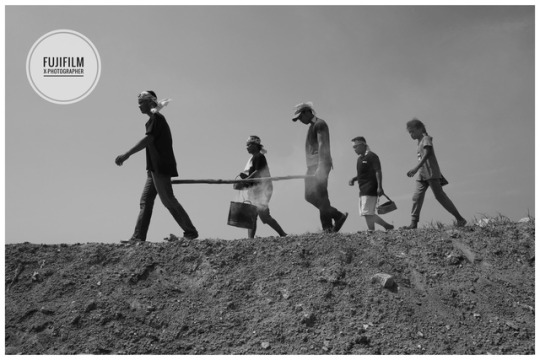
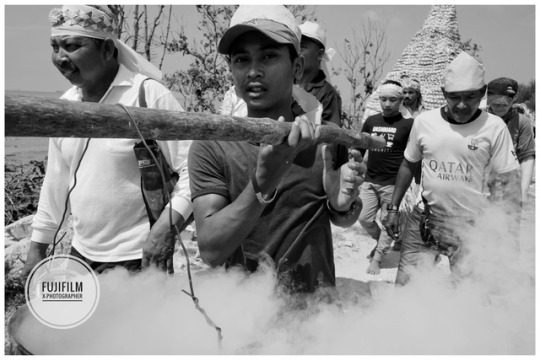


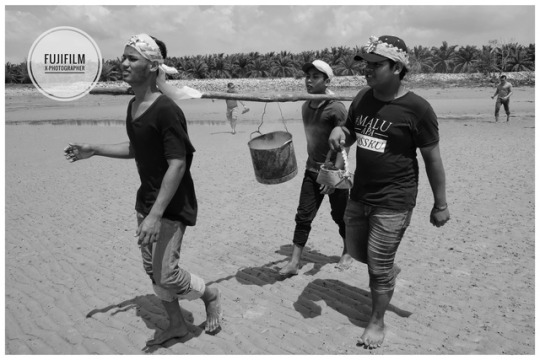

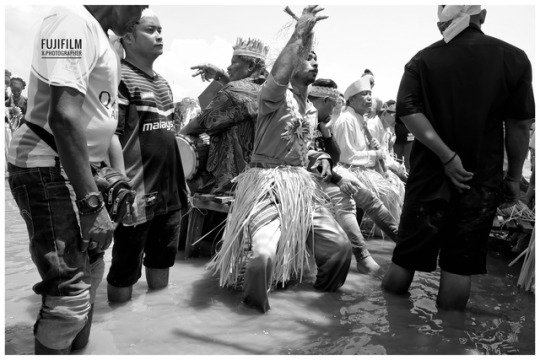

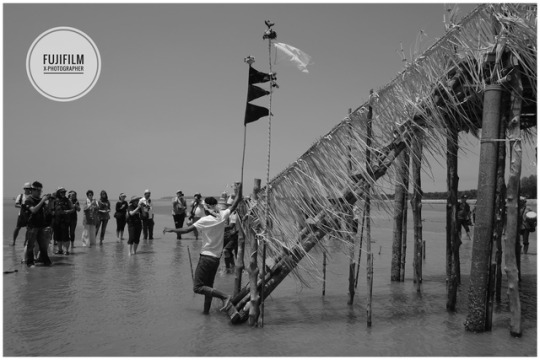
Puja Pantai (Ritual by Malaysia Mah Meri Tribe). Photo by Samsul Said.
IG: samdiaries
2 notes
·
View notes
Photo

Y una cosa que hice en clases
6 notes
·
View notes
Text
Introduction to linguistics
Language relations
Language families
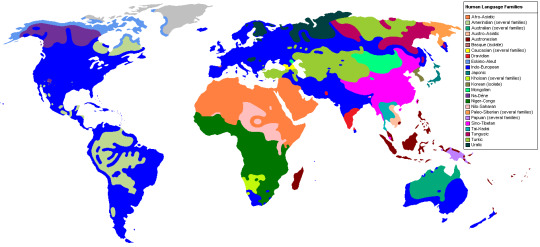
Just like living organisms, languages evolve, and the ones that come from the same ancestor (called “proto-language”) are part of the same language family. A language family can be subdivided into several subfamilies.
Comparative linguistics compares languages in order to establish their historical relatedness. This can be done by comparing their phonology, grammar, and vocabulary, even in cases where there are no written accounts of their ancestors.
The farther languages are from each other, the more difficult it can be to determine if there is a genetic relationship between them. For example, no linguist doubts that Spanish and Italian are related, but the existence of the Altaic family (which would include Turkish and Mongolian) is controversial and not accepted by all linguists. At present, it is simply impossible to know if all languages come from a common ancestor. If an original human language did exist, it would have been spoken tens of thousands of years ago. This makes comparisons extremely difficult or even impossible to perform.
Linguists have identified more than a hundred primary language families, i.e., language families that are not known to be related to each other. Some of them include only a few languages, others more than a thousand. Here are some of the main language families of the world:
Afro-Asiatic (Middle East, North Africa): Amazigh languages (Kabyle, Tamasheq, Zenaga...), Chadic languages (Hausa, Musgu, Tumak...), Cushitic languages (Beja, Oromo, Somali...), Omotic languages (Chara, Hozo, Nayi...), and Semitic languages (Amharic, Arabic, Hebrew...).
Altaic* (Turkey to Siberia): Mongolic languages (Dagur, Khamnigan, Shira Yugur...), Tungusic languages (Manchu, Oroch, Solon...), and Turkic languages (Turkish, Uyghur, Yakut...).
Austroasiatic (southeastern Asia): Aslian languages (Cheq Wong, Mah Meri, Semai...), Bahnaric languages (Alak, Laveh, Sedang...), Katuic languages (Kuy, Pacoh, Ta’Oi...), Khasi-Palaungic languages (Kiorr, Riang, War...), Khmer, Khmuic languages (O’du, Mlabri, Theen...), Mangic languages (Bolyu, Bugan, and Mang), Monic languages (Mon Rao, Mon Ro, Nyah Kur...), Munda languages (Juray, Kharia, Korku...), Nicobarese languages (Car, Nancowry, Teressa...), Pearic languages (Kasong, Somray, Suoi...), and Vietic languages (Cuói, Maleng, Vietnamese...).
Austronesian (southeastern Asia, Taiwan, Pacific, Madagascar): Atayalic languages (Atayal and Seediq), Bunun, East Formosan languages (Kavalan, Nataoran, Siraya...), Malayo-Polynesian languages (Chamorro, Javanese, Sundanese...), Northwest Foromosan languages (Pazeh, Saisiyat, and Thao), Paiwan, Puyuma, Rukai, Tsouic languages (Kanakanabu, Saaroa, and Tsou), and Western Plains languages (Babuza, Hoanya, Taokas....).
Dravidian (south India): Central Dravidian languages (Dhurwa, Kolami, Naiki...), North Dravidian languages (Brahui, Kurukh, and Malto), South-Central Dravidian languages (Chenchu, Gondi, Pengo...), and South Dravidian languages (Badaga, Malayalam, Tulu...).
Indo-European (Europe to India, nowadays all the continents): Albanian, Armenian, Balto-Slavic languages (Latvian, Polish, Russian...), Celtic languages (Breton, Irish, Scottish Gaelic...), Germanic languages (Danish, English, German...), Greek, Indo-Iranian languages (Bengali, Kamkata-vari, Kurdish...), and Italic languages (French, Italian, Portuguese...).
Kartvelian languages (South Caucasus): Georgian-Zan languages (Georgian, Laz, and Mingrelian) and Svan.
Kra-Dai (southeastern Asia): Be, Biao, Hlai languages (Cun, Qi, Run...), Kam-Sui languages (Mak, Mulam, Then...), Kra languages (Lachi, Laha, Qabiao...), Lakkia, and Tai languages (Bouyei, Lao, Shan...).
Na-Dene (North America): Tlingit and Athabaskan-Eyak languages (Ahtna, Hupa, Navajo...).
Niger-Congo (Sub-Saharan Africa): Atlantic-Congo languages (Bariba, Lingala, Yoruba...), Bangime, Dogon languages (Dogul, Jam Sai, Tebul...), Ijaw languages (Izon, Kalabari, Oruma...), Katla languages (Domorik and Kaalak), Mande languages (Goo, Loma, Soninke...), Rashad languages (Tagoi and Tegali), Siamou, Talodi-Heiban languages (Logol, Moro, Tocho...).
Northeast Caucasian languages (Caucasus): Avar-Andic languages (Andi, Avar, Bagvalal...), Dargic languages (Chirag, Itsari, Kajtak...), Khinalug, Lak, Lezgic languages (Aghul, Archi, Rutul...), Nakh languages (Bats, Chechen, and Ingush), and Tsezic languages (Bezhta, Hinukh, Khwarshi...).
Northwest Caucasian languages (northwestern Caucasus): Abazgi languages (Abaza and Abkhaz) and Circassian languages (Adyghe and Kabardian).
Sino-Tibetan (Asia): Bai, Bodo-Garo languages (Atong, Bodo, Megam...), Jingpho-Luish languages (Ganan, Jingpho, Sak...), Karenic languages (Pa’o, Pwo, Sgaw...), Kuki-Chin languages (Falam, Mro, Thaiphum...), Lolo-Burmese languages (Gong, Mru, Naxi...), Meitei, Sinitic languages (Caijia, Hokkien, Taihu Wu...), Tamangic languages (Chantyal, Gurung, Kutang...), and Tibetic languages (Balti, Dzongkha, Sikkimese...).
Tupian (South America): Arikem languages (Arikem, Kabixiana, and Karitiâna), Awetï, Mawé, Monde languages (Aruáshi, Gavião do Jiparan, Suruí...), Mundurukú languages (Kuruáya and Munduruku), Puruborá-Ramarama languages (Karo, Puruborá, and Urumi), Tuparí languages (Makuráp, Mekéns, Tuparí...), Tupi-Guaraní languages (Guajá, Sirionó, Tapirapé...), and Yurúna languages (Jurúna, Maritsauá, and Xipaya).
Uralic (central, eastern, and northern Europe, northern Asia): Finno-Permic languages (Komi, Livonian, Ume Sámi...), Hungarian, Khanty, Mansi, and Samoyedic languages (Enets, Nganasan, Selkup...).
*Some linguistics claim that the similarities found between subfamilies are due to borrowings or chance and not due to a genetic connection between them.
I have chosen three languages from different branches as examples for each subfamily, but of course, in most cases, there are many more. Some languages have several names, so I have used the most common one.
Language isolates
A language isolate is a language that has not been proven to belong to a known language family. The best example is Basque, spoken in Spain and France. Even though it is surrounded by Indo-European languages, it is very different from them. Linguists have compared Basque and other languages spoken in Europe, the Caucasus, and even America, but no relationship has ever been demonstrated.
Korean is another well-known isolate, although some linguists have proposed a relationship with the Altaic languages or Japanese. Japanese itself is sometimes considered an isolate, but it is best described as belonging to the small Japonic family, which includes a few related languages such as Okinawan.
239 notes
·
View notes
Text
kuchh to hawa bhi sard thi kuchh tha tera KHayal bhi
dil ko KHushi ke sath sath hota raha malal bhi
sab se nazar bacha ke wo mujh ko kuchh aise dekhta
ek dafa to ruk gai gardish-e-mah-o-sal bhi
meri talab tha ek shaKHs wo jo nahin mila to phir
hath dua se yun gira bhul gaya sawal bhi
Parveen Shakir
پروین شاکر
#urdu academia#dark academia#artists on tumblr#urdu poetry#artwork#art#lyrics#urdu lines#nail art#old art#aromantic#spilled thoughts#aesthetic
5 notes
·
View notes
Text
@rosetae ye meh hoo yeh meri mah hei idhar snow horoheehae
#ayesha tag#I HATETHISBTIHC SO BADDKNFSDKJNSDKJFNKJSDFNKSDJNF#SHE SOUNDED LIKE A COWBOY TRYNA SPEAK URDUUUFSDUFUDSFNSDKJFN
4 notes
·
View notes
Text
Eid Mubarak Messages
Eid Mubarak Messages: Yeh Post Un Doston Ke Liye Hai Jo Msg Farward Kar Kar Ke Sara Saal Hamara Sir To Khatay Hain Magar Aik Baat Ahem Hai Woh Yeh Ke Saal Bhar Yahi Log To Hamein Apni Yaad Ka Hissa Banaaye Rakhtay Hain. Chalein Aaj Un Doston Ko Eid Mubarak Pegham Hum Bhi Hain. Yeh Eid Mubarak Ke Pegham Mazahiy To Hain Magar Achay Hain. Agar Aap Ne Hamari Post Miss Ki Hai To Zaroor Eid Mubarak Ki Naik Tamanaat O Khwahisaat Zaroor Padhiye Ga . Aap humari Eid Mubarak – Muslim Ahbaab Ko Eid Ul Fitr Mubarak Post zaroor Parihieyga!
Hamein Facebook par Zaroor Follow Kijiyej Ga. Taakeh Aap Hamari Taaza Tareen Posts Se Aagah Reh Saken. Agr Eid Mubarak Wishes Urdu Main Padhna Chahtey hein to Salgirah website per Padh saktey hein.
Eid Mubarak Messages
Keh Lau Keh Lau Eid Mubarak, Eid Ke Din Taq Ke Liye Riayat Dete Hain. Aap Ko Bhi Eid Mubarak Ho Meri Jaan Ke Totay. Agar Totay (Piece) Ki Jagah Totay (Parrot) Likhoon To Achhaa Rahay Ga.
Eid Ul Fitr Ke Mauqay Par Payarey Se Group Walon Ko Bohat Bohat Eid Mubarak – Mein Allah Saaien Se Dua Karta Hon Ke Yeh Eid Aap Ke Naseeb Jaga Day Aur Aap Ki Qismat Roshan Kar Day. Ameeen
Sara Ramdhan Sehri O Aftaari Ki Taswerain Bhaij Bhaij Ke Dil Jalanay Walon Ko Bhi Bohat Bohat Eid Mubarak
Mere Facebook Ke Saaray Doston Ko Intahi Khuloos Aur Mohabbat Ke Sath Eid Mubarak Ho Aur Unko Bhi Jo Sara Ramdhan Aftaari Ki Tasweer Bhaij Bhaij Ke Dil Jala Rahay They. Un Saaray Paito Doston Ko Eid Mubarak
Mere Wats App Ke Saaray Doston Ko Intahi Khuloos Aur Mohabbat Ke Sath Eid Mubarak Ho Allah Unko, Unkay Ahal O Ayal Ke Sath Khush O Khurram Rakhay Ameen
Tamam Musalmanoon Aur Khaas Tor Par Friends And Followers Ko Bohat Bohat Eid Mubarak! Is Muqaddas Mah Ramdhan Mein Jo Bhi Ebadaat Aap Ney Ki Hain Meri Dua Hai Ke Woh Bargaah E ILaahi Mein Qubool Ho Jaien – Ameeen Sm Ameeen
Tamam Ahbaab Ko Dili Eid Mubarak
Meri Taraf Se Aap Sab Ko Eid Mubarak

Funny Eid Wishes for Facebook and WhatsApp Friends
Yaar Eid ke din to Aram karein, aaj bhi aagaye sar khaney Lagta hai Ghar main SIwiyan nahi Bani! Chalain koi Naheen meri Taraf se Siwayon ki tarah Meethi Meethi Eid MUbarak
Eid ka din hai bada Suhana
Tum se Milney ka Hai acha Bahana
Main aajaaunga ghar Mithaayi deney
tum bhi Hath Milaney Aajaanaa
Is Group ne Jis Jis ne Hathon Pe Mehndi Lagai Hai Aur Mere Naam ka First Letter likha hai Us ke liye buhat Buhat Eid Mubarak Aur Eidi bhi hai jo mileygi Bas Inbox main hahahah Eid Mubarak
Suna hai aaj Rangon main Saji Pari Ho, Sara Muhalla Betaab hai ke aap ko kaisey eid Mubarak kahain. Allah ka shukur jo aap meri friend list mein hain. Aap ko buhat Buhat Eid Mubarak! Dekho Eid ke din toh Tapoori Na kehna
Arey o Motu O Petu Eid Mubarak Ho. Ab aram se paani pee saktey ho, Azan Kiya hoti thee Tum to sarey Ghar ka paani pee jatey they. Moti Moti Si Eid Mubarakain Group ke Mottu ke liye!
Oye Hoye aaj to admi lag rahey ho. Lagta hai aaj nahaaye ho. Eid mubarak smart boy
Main Umeed karta hun meri ye latest and new eid mubarak wishes aap ko pasand aayi hongeen. Agr aap bhi Eid Mubarak paigham likhna chahtey hein toh humein bhejiye. aap ke naam se print hongey. Comment ker ke zaroor batatiyega.
2 notes
·
View notes
